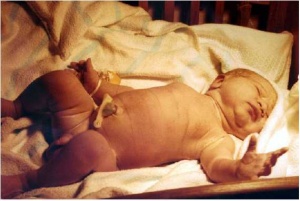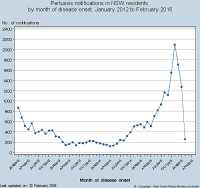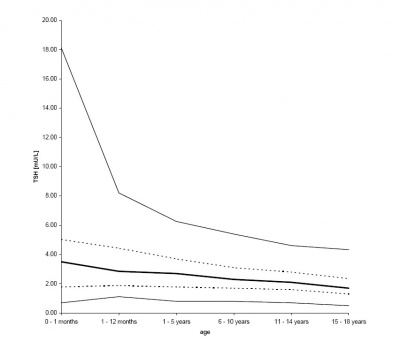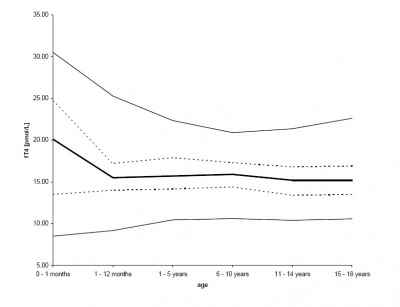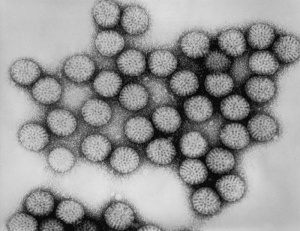Neonatal Development
| Embryology - 27 Apr 2024 |
|---|
| Google Translate - select your language from the list shown below (this will open a new external page) |
|
العربية | català | 中文 | 中國傳統的 | français | Deutsche | עִברִית | हिंदी | bahasa Indonesia | italiano | 日本語 | 한국어 | မြန်မာ | Pilipino | Polskie | português | ਪੰਜਾਬੀ ਦੇ | Română | русский | Español | Swahili | Svensk | ไทย | Türkçe | اردو | ייִדיש | Tiếng Việt These external translations are automated and may not be accurate. (More? About Translations) |
| Educational Use Only - Embryology is an educational resource for learning concepts in embryological development, no clinical information is provided and content should not be used for any other purpose. |
Introduction
For information on parturition see birth.
The neonatal period (birth to 1 month) is a time of extensive and ongoing system transition from uterine environment to external world, this includes the initial period after birth which is referred to as the perinatal period.
It would seem obvious to say that development does not stop at birth. In fact many systems (cardiovascular, respiratory, gastrointestinal, homeostasis) undergo significant changes at birth, and many others (neural) have not yet completed their development. Note this current project focuses on prenatal development, so postnatal content is not as detailed.
Postnatal development can be broadly divided into the age categories of: Neonatal (birth to 1 month), Infancy (1 month to 2 years), Childhood (2 years to puberty), Puberty (12 years to mid-teens) and Young Adult which is a new category (late teens to early twenties).
| Postnatal Links: birth | neonatal | neonatal diagnosis | milk | Nutrition | growth charts | Disease School Exclusion | vaccination | puberty | genital |
Some Recent Findings
|
| More recent papers |
|---|
|
This table allows an automated computer search of the external PubMed database using the listed "Search term" text link.
More? References | Discussion Page | Journal Searches | 2019 References | 2020 References Search term: Neonatal Development | Newborn Development | Postnatal Development |
| Older papers |
|---|
| These papers originally appeared in the Some Recent Findings table, but as that list grew in length have now been shuffled down to this collapsible table.
See also the Discussion Page for other references listed by year and References on this current page. |
Head Circumference
| <html5media height="400" width="500">File:Newborn n 28.mp4</html5media> | Along with weight, Guthrie test, and other diagnostic measurements of the neonate are a number of size measurements including head circumference (OFC, occipital-frontal circumference).
|
Neonatal - Very Low Birth Weight (VLBW)
VLBW neonates are between 401 to 1500 grams. The table below shows USA (NICHD) data for VLBW infants who survived beyond 3 days and had one or more episodes of blood culture-proven sepsis, the common cause of infection by gram-positive organisms, and the percentage of these resulting from coagulase-negative staphylococci.[4][5]
| Years | Blood culture-proven sepsis | Gram-positive organisms | Staphylococci |
| 1991 - 1993 | 25% | 73% | 55% |
| 1998 - 2000 | 21% | 70% | 48% |
Neonatal Jaundice
Neonatal jaundice refers to the yellow colouration of the skin and the sclera (whites of the eyes) that results from accumulation of bilirubin in the skin and mucous membranes. This is associated with a raised level of bilirubin in the circulation, a condition known as hyperbilirubinaemia. About 60% of term and 80% of preterm babies develop jaundice in the first week of life, and about 10% of breastfed babies are still jaundiced at 1 month of age.[6]
Unmanaged jaundice can lead to neural (brain), and sensory (vision and hearing) damage.[7] Treatment involves frequent feeding, phototherapy, and in severe cases exchange transfusion.
Abnormalities
There are many birth associated abnormalities, only a few examples are listed below. In particular the perinatal period is a time when fetal systems that have either not yet been functional (respiratory, gastrointestinal, neural) or are extensively remodelled (cardiovascular, placental). There are also a number of maternal issues.
The International Classification of Diseases (ICD) has two entire chapters committed to the childbirth and the perinatal period, the major sub-headings are shown below. More detail is available on the chapter pages, Chapter XV Pregnancy Childbirth and Chapter XVI Perinatal Period. The World Health Organization's ICD classification used worldwide as the standard diagnostic tool for epidemiology, health management and clinical purposes. This includes the analysis of the general health situation of population groups. It is used to monitor the incidence and prevalence of diseases and other health problems.
Chapter XVI Certain conditions originating in the perinatal period (P00-P96)
Includes conditions that have their origin in the perinatal period even though death or morbidity occurs later.
- Excludes congenital malformations, deformations and chromosomal abnormalities (Q00-Q99); endocrine, nutritional and metabolic diseases (E00-E90); injury, poisoning and certain other consequences of external causes (S00-T98); neoplasms (C00-D48); tetanus neonatorum (A33)
Major sub-headings are shown below, select the sub-heading link to see details.
- P00-P04 - Fetus and newborn affected by maternal factors and by complications of pregnancy, labour and delivery.
- P05-P08 - Disorders related to length of gestation and fatal growth.
- P10-P15 - Birth trauma.
- P20-P29 - Respiratory and cardiovascular disorders specific to the perinatal period.
- P35-P39 - Infections specific to the perinatal period.
- P50-P61 - Haemorrhagic and haematological disorders of fetus and newborn.
- P70-P74 - Transitory endocrine and metabolic disorders specific to fetus and newborn.
- P75-P78 - Digestive system disorders of fetus and newborn.
- P80-P83 - Conditions involving the integument and temperature regulation of fetus and newborn.
- P90-P96 - Other disorders originating in the perinatal period.
- O00-O08 - Pregnancy with abortive outcome.
- O10-O16 - Oedema, proteinuria and hypertensive disorders in pregnancy, childbirth and the puerperium.
- O20-O29 - Other maternal disorders predominantly related to pregnancy.
- O30-O48 - Maternal care related to the fetus and amniotic cavity and possible delivery problems.
- O60-O75 - Complications of labour and delivery.
- O80-O84 - Delivery.
- O85-O92 - Complications predominantly related to the puerperium.
- O94-O99 - Other obstetric conditions, not elsewhere classified.
- Links: ICD - XVI Perinatal Period | ICD - XV Pregnancy Childbirth | International Classification of Diseases | Human Abnormal Development
Australian Statistics
| Australian Perinatal Deaths | ||||||||||
|---|---|---|---|---|---|---|---|---|---|---|
| Year | 2000 | 2001 | 2002 | 2003 | 2004 | 2005 | 2006 | 2007 | 2008 | 2009 |
| Rate | 10.1 | 10.4 | 9.8 | 9.8 | 9.9 | 10.6 | 9.2 | 8.8 | 8.4 | 9.0 |
| Number | 2,534 | 2,571 | 2,475 | 2,480 | 2,541 | 2,769 | 2,459 | 2,532 | 2,501 | 2,671 |
- Perinatal deaths are all fetal deaths (at least 20 weeks gestation or at least 400 grams birth weight) plus all neonatal deaths (death of a live born baby within 28 completed days of birth).
- Perinatal death rates are calculated per 1,000 all births for the calendar year.
- Source: ABS Births, Australia, 2009 (cat. no. 3301.0); ABS Perinatal Deaths, Australia, 2009 (cat. no. 3304.0).
Newborn Neural Exam
Neural - The collapsed tables below link to a number of short videos that demonstrate simple assessments of the postnatal developing nervous system.
|
| ||||||||||||||||||||||||||||||||||||||||||||||||||||||||||||||||||||||||||
|
|
- Links: Neural Exam Movies
Postnatal Endocrine
Pituitary
Postnatal thyrotropin (TSH) levels PubmedParser error: The PubmedParser extension received invalid XML data. ()
Thyroid
Postnatal freeT4 (fT4) levels PubmedParser error: The PubmedParser extension received invalid XML data. ()
Childhood Disease
There are many different diseases that can impact on postnatal development, the most serious of which result in death. In developing countries the most common infectious diseases include acute otitis media, pharyngitis and gastroenteritis. Some postnatal diseases may also have different outcomes dependent upon availability of medical support, though even in developed countries other factors can also impact on outcomes.
- For example, a recent British Medical Journal (BMJ 25 June 2005) article "Outcome of meningococcal disease in children" identified in this UK study (of 498 children) three independent factors associated with an increased risk of death: not being cared for by a paediatrician, junior staff working with not enough supervision, and failure of staff to administer adequate inotropes.
Gastroenteritis
(acute infectious enteritis) Occurs in children and is generally viral (rotavirus) rather than bacterial.[8] By 5 years of age, nearly every child worldwide will have had at least one episode of rotavirus gastroenteritis.
Rotavirus
- Non-enveloped, icosahedral virus of the Reoviridae family containing a genome of 11 segments of double stranded RNA (dsRNA).
- Divided into seven serotypes (Rotavirus A–G).
- Replicates in mature enterocytes of the small intestine.
Worldwide each year it is estimated:[9]
- 100 million episodes of gastroenteritis
- results in 25 million clinic visits
- 2 million hospitalizations
- more than 611,000 deaths in children below 5 years of age.
- children in developing countries account for 82% of rotavirus deaths.
Meningococcal disease
(meningitis) Is a viral or bacterial infection of cerebrospinal fluid of the spinal cord and brain. Treatment and outcomes differ for either viral (less severe, resolves without specific treatment) or bacterial (severe, may result in brain damage, hearing loss, or learning disability) infections. For bacterial meningitis, determining the type of bacteria is important because antibiotics can prevent some types from spreading and infecting other people. Before the 1990s, Haemophilus influenzae type b (Hib) was the leading cause of bacterial meningitis, but new vaccines being given to all children as part of their routine immunizations have reduced the occurrence of invasive disease due to H. influenzae. Today, Streptococcus pneumoniae and Neisseria meningitidis are the leading causes of bacterial meningitis. (text modifed from CDC information - More? CDC - meningococcal disease | technical information)
Dysentry
Can be a substantial cause of death in newborn and young children in developing countries, it is a condition occurring sporadically in developed countries. Dysentery may be simply defined as diarrhoea containing blood. Although several organisms can cause dysentery, Shigella are the most important. Shigella dysenteriae type 1 (Sd1), also known as the Shiga bacillus, is the most virulent of the four serogroups of Shigella. Sd1 is the only cause of epidemic dysentery. In addition to bloody diarrhoea, the illness caused by Sd1 often includes abdominal cramps, fever and rectal pain. Less frequent complications of infection with Sd1 include sepsis, seizures, renal failure and the haemolytic uraemic syndrome. Approximately 5-15% of Sd1 cases are fatal. (from a WHO Factsheet on dysentry)
- Links: vaccination | Rotavirus
References
- ↑ Sylos-Labini F, La Scaleia V, Cappellini G, Fabiano A, Picone S, Keshishian ES, Zhvansky DS, Paolillo P, Solopova IA, d'Avella A, Ivanenko Y & Lacquaniti F. (2020). Distinct locomotor precursors in newborn babies. Proc. Natl. Acad. Sci. U.S.A. , 117, 9604-9612. PMID: 32284405 DOI.
- ↑ Fathima P, Snelling TL, de Klerk N, Lehmann D, Blyth CC, Waddington CS & Moore HC. (2019). Perinatal Risk Factors Associated With Gastroenteritis Hospitalizations in Aboriginal and Non-Aboriginal Children in Western Australia (2000-2012): A Record Linkage Cohort Study. Pediatr. Infect. Dis. J. , 38, 169-175. PMID: 29620723 DOI.
- ↑ Leung M, Perumal N, Mesfin E, Krishna A, Yang S, Johnson W, Bassani DG & Roth DE. (2018). Metrics of early childhood growth in recent epidemiological research: A scoping review. PLoS ONE , 13, e0194565. PMID: 29558499 DOI.
- ↑ Stoll BJ, Gordon T, Korones SB, Shankaran S, Tyson JE, Bauer CR, Fanaroff AA, Lemons JA, Donovan EF, Oh W, Stevenson DK, Ehrenkranz RA, Papile LA, Verter J & Wright LL. (1996). Late-onset sepsis in very low birth weight neonates: a report from the National Institute of Child Health and Human Development Neonatal Research Network. J. Pediatr. , 129, 63-71. PMID: 8757564
- ↑ Stoll BJ, Hansen N, Fanaroff AA, Wright LL, Carlo WA, Ehrenkranz RA, Lemons JA, Donovan EF, Stark AR, Tyson JE, Oh W, Bauer CR, Korones SB, Shankaran S, Laptook AR, Stevenson DK, Papile LA & Poole WK. (2002). Late-onset sepsis in very low birth weight neonates: the experience of the NICHD Neonatal Research Network. Pediatrics , 110, 285-91. PMID: 12165580
- ↑ National Collaborating Centre for Women's and Children's Health (UK). Neonatal Jaundice. London: RCOG Press; 2010 May. (NICE Clinical Guidelines, No. 98.) Bookshelf NBK65119
- ↑ Ip S, Chung M, Trikalinos T, et al. Screening for Bilirubin Encephalopathy [Internet]. Rockville (MD): Agency for Healthcare Research and Quality (US); 2009 Oct. (Evidence Syntheses, No. 72.) Bookshelf NBK34036
- ↑ Koletzko S & Osterrieder S. (2009). Acute infectious diarrhea in children. Dtsch Arztebl Int , 106, 539-47; quiz 548. PMID: 19738921 DOI.
- ↑ Parashar UD, Gibson CJ, Bresee JS & Glass RI. (2006). Rotavirus and severe childhood diarrhea. Emerging Infect. Dis. , 12, 304-6. PMID: 16494759 DOI.
NCBI Bookshelf
The NCBI Bookshelf contains a number of complete online publications that relate to neonatal development. Of particular interest, is the new resource "Disease Control Priorities in Developing Countries", which talks to important neonatal health issues in these countries.
Health Services/Technology Assessment Text (HSTAT) Bethesda (MD): National Library of Medicine (US), 2003 Oct.
- Criteria for Determining Disability in Infants and Children: Low Birth Weight
- Effects of Omega-3 Fatty Acids on Child and Maternal Health
Old Links (search book shelf with text)
- Management of Neonatal Hyperbilirubinemia
- Criteria for Determining Disability in Infants and Children: Failure to Thrive
- Newborn Screening for Sickle Cell Disease and Other Hemoglobinopathies
- Early Identification of Hearing Impairment in Infants and Young Children
- Critical Care Medicine
- The Effect of Corticosteroids for Fetal Maturation on Perinatal Outcomes
- Improving Treatment for Drug-Exposed Infants
- Recommendations for Use of Antiretroviral Drugs in Pregnant HIV-1-Infected Women for Maternal Health and Interventions to Reduce Perinatal HIV-1 Transmission in the United States
- Management of Preterm Labor
- Management of Prolonged Pregnancy
- Cesarean Childbirth
- Vaginal Birth After Cesarean (VBAC) Volume 1 and Volume 2
Disease Control Priorities in Developing Countries (2nd ed.) Dean T. Jamison, Joel G. Breman, Anthony R. Measham, George Alleyne, Mariam Claeson, David B. Evans, Prabhat Jha, Anne Mills, Philip Musgrove, editors Washington (DC): IBRD/The World Bank and Oxford University Press; 2006
- Newborn Survival
- Maternal and Perinatal Conditions
- Vaccine-preventable Diseases
- "Vaccines that prevent measles, tuberculosis, diphtheria, pertussis, Hib, and Neisseria meningitis prevent respiratory diseases.
- Vaccines against measles and pertussis, prevent diseases that cause or contribute to malnutrition.
- New vaccines, Streptococcus pneumoniae, influenza, typhoid fever, and rotavirus.
- Vaccines to prevent mumps and varicella that are routinely used in some developed countries are not included in most vaccination programs in developing countries.
- Clean umbilical cord care to reduce the incidence of neonatal tetanus, vitamin A therapy to reduce the case-fatality rate (CFR) from measles."
Basic Neurochemistry, Molecular, Cellular, and Medical Aspects (6th ed.) Siegal, George J.; Agranoff, Bernard W.; Albers, R. Wayne; Fisher, Stephen K.; Uhler, Michael D., editors. Philadelphia: Lippincott, Williams & Wilkins; c1999.
Old Links (search book shelf with text)
- etiology of schizophrenia may involve pathological processes during brain development
- steroid hormone receptors become evident in target neurons of the brain
- Biochemistry of Thyroid Hormone Actions on Brain
"Hypothyroidism increases synaptic density, at least transiently. Interesting parallels with synapse formation are reported for learning behavior in rats; neonatal hypothyroidism impairs learning ability, whereas hyperthyroidism accelerates learning initially, followed by a decline later in life"
"The outlook is almost uniformly fatal, and the few babies who survive have severely compromised development and a cardiomyopathy that usually proves fatal. In rare cases, a patient stays asymptomatic until after the neonatal period, when hepatomegaly, vomiting, metabolic acidosis, hypoglycemia and a proximal myopathy become evident."
brain utilizes ketones in states of ketosis
"Significant utilization of ketone bodies by the brain is, however, normal in the neonatal period. The newborn infant tends to be hypoglycemic but becomes ketotic when it begins to nurse because of the high fat content of the mother's milk. When weaned onto the normal, relatively high-carbohydrate diet, the ketosis and cerebral ketone utilization disappear."
Reviews
Articles
Search Pubmed
April 2010
- neonatal development - All (63838) Review (9418) Free Full Text (10937)
Search Pubmed Now: perinatal development | neonatal development
External Links
External Links Notice - The dynamic nature of the internet may mean that some of these listed links may no longer function. If the link no longer works search the web with the link text or name. Links to any external commercial sites are provided for information purposes only and should never be considered an endorsement. UNSW Embryology is provided as an educational resource with no clinical information or commercial affiliation.
Australian Information
- NHMRC - Staying Healthy in Child Care - Preventing infectious diseases in child care | 2006 Recommended minimum exclusion periods for infectious conditions for schools, pre-schools PDF
- NSW Information Mark Hill 08:04, 7 June 2012 (EST) These links no longer function and require updating.
- The following are links to PDF documents prepared by NSW Health designed for clinical care (not patient information). Clinical Practice Guidelines for Paediatric Care
- Acute Management of Infants and Children with: Bacterial Meningitis | Otitis Media | Fever | Asthma | Croup |
- WA Information Institute for Child Health Research (WA) | http://www.ichr.uwa.edu.au/about/intro.html | meningitis centre
- Victorian Department of Health Neonatal ehandbook - structured approach to the clinical management of conditions regularly encountered by health professionals caring for newborns.
American Information
- American Academy of Family Physicians
- The Newborn Examination Part I. Emergencies and Common Abnormalities Involving the Skin, Head, Neck, Chest, and Respiratory and Cardiovascular Systems | Part II. Emergencies and Common Abnormalities Involving the Abdomen, Pelvis, Extremities, Genitalia, and Spine
- Common Issues in the Care of Sick Neonates
- American Medical Association "Kids Health" (these are easy to read general public pages American not Australian Information )
Terms
| Neonatal Terms | ||
|---|---|---|
| ||
|
Glossary Links
- Glossary: A | B | C | D | E | F | G | H | I | J | K | L | M | N | O | P | Q | R | S | T | U | V | W | X | Y | Z | Numbers | Symbols | Term Link
Cite this page: Hill, M.A. (2024, April 27) Embryology Neonatal Development. Retrieved from https://embryology.med.unsw.edu.au/embryology/index.php/Neonatal_Development
- © Dr Mark Hill 2024, UNSW Embryology ISBN: 978 0 7334 2609 4 - UNSW CRICOS Provider Code No. 00098G
